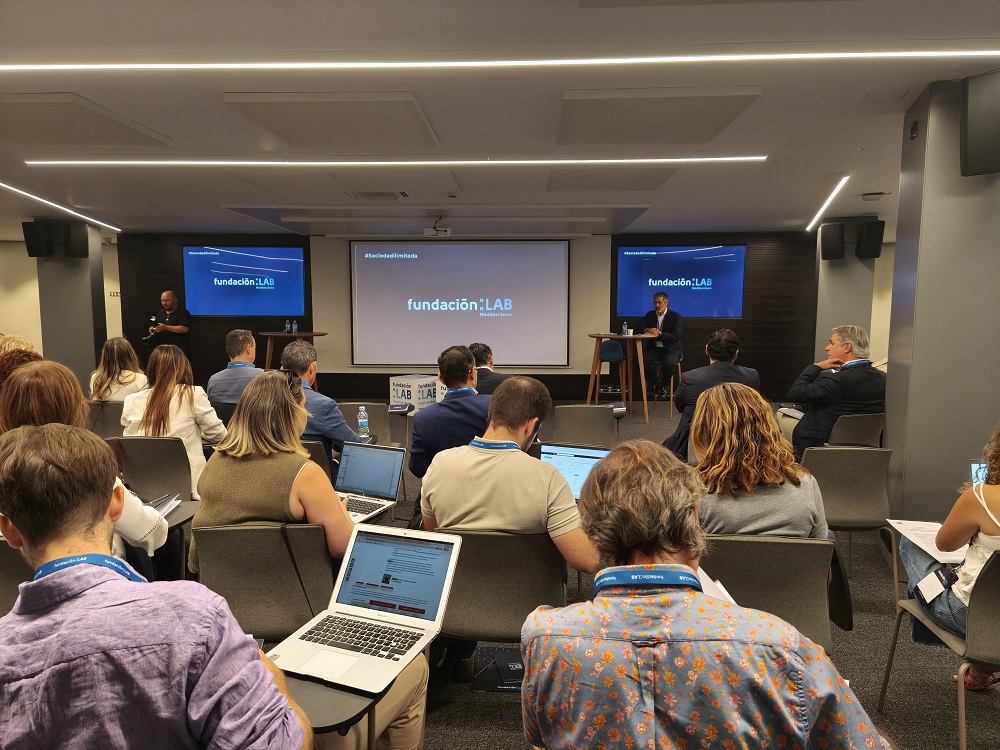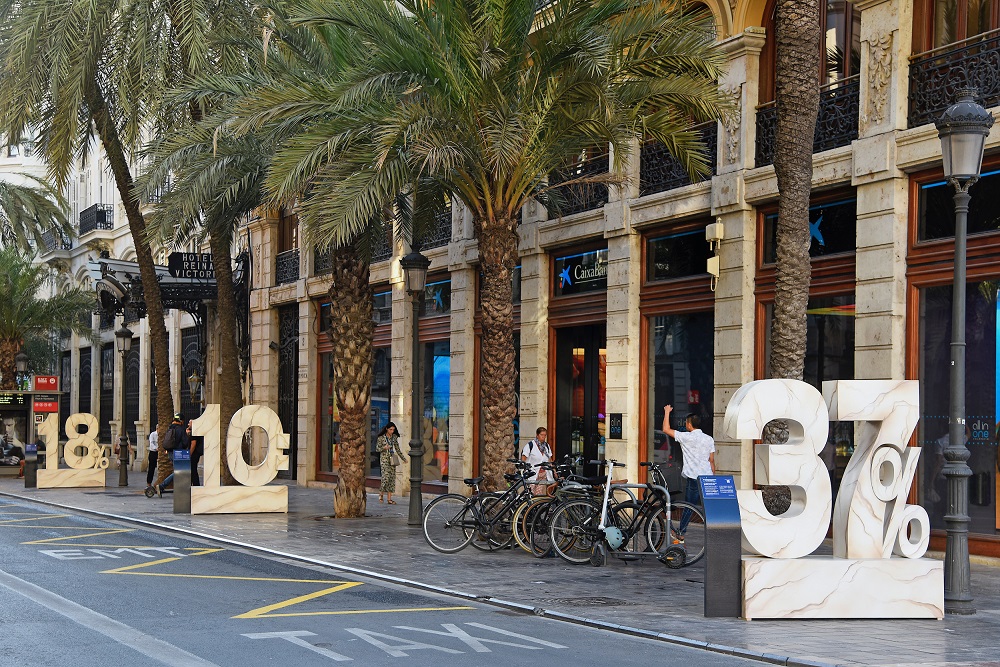Esta web utiliza cookies para que podamos ofrecerte la mejor experiencia de usuario posible. La información de las cookies se almacena en tu navegador y realiza funciones tales como reconocerte cuando vuelves a nuestra web o ayudar a nuestro equipo a comprender qué secciones de la web encuentras más interesantes y útiles.

The Digital Economy Generates 18% of GDP in the Valencian Community
Fundación LAB Mediterráneo, in collaboration with the Ivie, has published the second edition of the LAB Observatory of R&D&i, Technology, and Entrepreneurship in the Valencian Community
The region is making progress in the digitalization of its economy, both in terms of production and employment, reaching a value of €22.35 billion in 2023. This means the digital economy now accounts for 18% of the regional GDP—an increase of five percentage points over the past decade. However, it still lags behind the digitalization levels of Madrid (30.3%), Catalonia (22.8%), and the Basque Country (22.1%).
The region continues to show an upward trend in various indicators related to R&D&i, technology, and entrepreneurship, although weaknesses remain in key areas. These were analyzed during the presentation of the 2025 LAB Observatory.
Fundación LAB Mediterráneo and Ivie developed this database to analyze and compare the Valencian Community’s performance in these areas with the national average and other regions. The ultimate goal is to provide information that can help shape public and private policies aimed at transitioning to a knowledge- and technology-based production model.
To achieve this, the LAB Observatory analyzes 50 indicators grouped into four main pillars that drive the transformation of the Valencian economy: R&D, intangibles and business innovation, technology and digitalization, and entrepreneurship and human capital. It also includes a set of general indicators focused on regional competitiveness. This second edition introduces new variables such as investment in digital information, digital employment, the presence of digital specialists, their average salary and wage premium compared to other occupations, and investment in ICT security and AI by companies.
The president of Fundación LAB Mediterráneo, Héctor Dominguis, presented the event. Ivie Researcher and study author, Javier Quesada, along with economist and co-author, Juan Pérez, discussed the main findings.
The 2025 LAB Observatory first highlights the region’s significant growth, starting with its population, which increases by 100,000 people annually. In this context, the report also shows an improvement in job quality, with the percentage of overqualified workers dropping by 6 points since 2014 to 34%, compared to a national average decrease of just 1.6 points (35%). This progress contributes to increased labor productivity in the region, which continues to show a post-COVID increase, moving toward convergence with the EU average. The European Commission confirms the region’s improved competitiveness in recent years, with an 8.7-point increase in its Regional Competitiveness Index—above Spain’s average increase of 4 points.
In its first pillar, the Observatory notes that, although there has been progress in private R&D investment, it remains insufficient. Private sector R&D spending has risen to €800 million, but still falls short of the national average (0.57% of GDP vs. 0.85%) and is far behind regions like the Basque Country, where private R&D investment reaches 1.79% of GDP. To reach the national average, an additional €380 million investment from the business sector would be needed.
In the second pillar, the report highlights that in 2025, for the first time, the Valencian Community ranks among the 100 most innovative regions in the EU, according to the Regional Innovation Scoreboard (RIS). There is also an increase in total investment in intangible assets (R&D, software, design, organizational structure), though it remains below the national average (7.4% of GDP in the region vs. 8% nationally).
These investments support the development of technology and digitalization analyzed in the third pillar. The value of production and employment using digital tools reaches €22.35 billion, representing 18% of the regional GDP. Observing the digitalization trend of recent years (2021-2023), the Valencian Community shows the second-highest growth in digital gross value added (GVA) at +4.2%, behind Madrid (+5%), although it still falls short of the digitalization levels seen in Madrid (30.3%), Catalonia (22.8%), and the Basque Country (22.1%).
The number of digital specialists working in the region exceeds 176,000, accounting for 8.4% of total employment. However, their wage premium compared to other occupations is 37% below the national average and Madrid’s 50%, which may hinder talent attraction and retention. Only 12.8% of industrial companies and 15.3% of service companies in the region employ digital specialists, compared to national averages of 14.2% and 19.4%, respectively.
In the fourth pillar—entrepreneurship and human capital—a positive trend is the growth in entrepreneurial activity. The percentage of adults involved in starting or developing a business has risen from 5.3% to 8.2%, surpassing the national rate of 7.3%. Digital employment has grown by 36% in the region over the past decade (30% nationally), reaching 363,300 jobs, or 17.2% of total employment—below the national average (19.4%) and far behind Madrid (27.3%), Catalonia, and the Basque Country (both around 21%).
LAB Observatory Recommendations
After analyzing the 50 available indicators, the LAB Observatory offers the following suggestions and recommendations to further advance the transformation of the Valencian Community:
- Promote employee training, guiding specialization toward occupations related to technology and information management, environmental sustainability, or biotechnology.
- Develop initiatives to attract specialists in high-employability sectors.
- Make technologists or researchers trained in Valencian institutions available to companies, for example through industrial PhD programs.
- Leverage the region’s high patent activity by providing funding to develop viable projects within companies.
- Secure a position among the top 100 regions in the Regional Innovation Scoreboard (RIS) to consolidate the image of the Valencian Community as an innovative European region.
- Increase the presence of digital specialists in Valencian companies, and prevent the risk of talent drain digital due to lower compensation.
- Take advantage of opportunities in cybersecurity and AI to integrate digitalization into daily operations.
- Design educational offerings aligned with occupations that will be in high demand in the medium term.
- Utilize the capacity of multinational companies based in the region to energize the supplier network that develop around them.
Additionally, the recommendations from the 2024 LAB Observatory remain relevant: Bring the business sector closer to the educational system; Integrate digitalization into non-technological sectors; Position public administrations as drivers of investment in intangible assets; Take advantage of Next Generation EU funds; Base growth on improvements in productivity.







